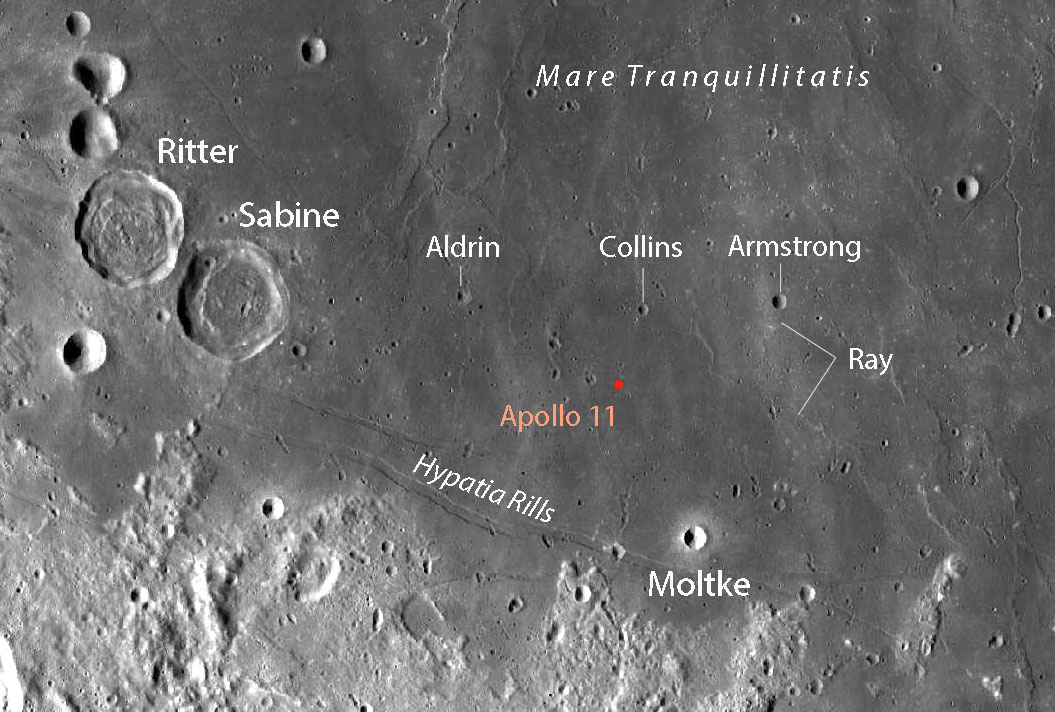
If you are an Apollo 11 nerd like me, you will want to check out a new website created by Ben Feist, a Canadian “software developer and spaceflight data visualization researcher working with NASA.”[1] The site called, “The First Landing on the Moon, Apollo 11, Real-Time Mission Experience,” is a treasure chest of audio clips, photos, and live data of the Apollo 11 Mission. This was the mission which resulted in the successful moon landing and return to earth of Neil Armstrong, Buzz Aldrin and Michael Collins. Michael Collins flew the command module in orbit around the moon while other two men made the historic landing, set up experiments on the moon, and brought back rock samples.
By now, most of us will have seen a reminder of the July 20, 1969 landing in some form of media, and CBC has done a great job of retelling the story on their news site. If you want to go deeper and relive the excitement, anxiety, mystery, and joy of humanity doing so much with so little and making it possible for two men to leave footprints on the moon, spend some time on Ben Feist’s remarkable website. Only the biggest Apollo geeks (I may be in that category) will enjoy hearing the exact pitch, trim, and roll of the linked Command Module (CM) and Lunar Module (LM) as they came out of radio silence on the far side of the moon, but others will appreciate the radio signals between the astronauts and Ground Control in Houston as they established a secure voice link by switching from one antenna to another. The care and detail of each team is evident as everyone works to get everything just right for the separation of CM and LM and the eventual landing of the LM.
There are also humorous moments in which the NASA crew on the ground joke with each other and challenge each other to rise to the immense discipline and hard work required to make everything function just right. The attention of thousands of people made it possible to do what three men accomplished in orbit around and on the surface of the moon. One of the most striking elements of the audio tapes is the calmness with which every command is given and received. At one point, we hear Houston say that they want to make a correction to data they had previously given. “We made an error on those coordinates. We’d like you to load for latitude in a NOUN 89 plus 01 243, longitude over 2 plus 11 844, altitude minus 001 46 as shown in the Flight Plan. Over.” Collins replies in a calm voice “Okay, Thank-you.” There are many more examples of real-time problem solving that occurred at every stage of the process. One gets the impression that the entire operation was highly disciplined and polished to perfection.
There are amazing full-colour and black-and-white photos associated with the audio transcripts that allow one to have a sense of what the astronauts were seeing as they worked on the details of the landing. There is video of the Houston Control Room where we can see Flight Director Gene Kranz smoking a cigar as he awaits the undocking of CM and LM. The actual landing is shown in detail and we see Armstrong testing his ability to step onto the surface and making sure he can still get back onto the LM steps before he makes his momentous official first words from the surface.
As I write these words, I have the Mission Control audio running in the background. It is almost like experiencing the landing first-hand fifty years ago today. Thank you, Ben Feist, for once again inspiring my imagination. Thank you, NASA for inspiring all of humanity with this remarkable feat of engineering on July 20, 1969.
[1]BenFeist.com blog site, 2019-07-20